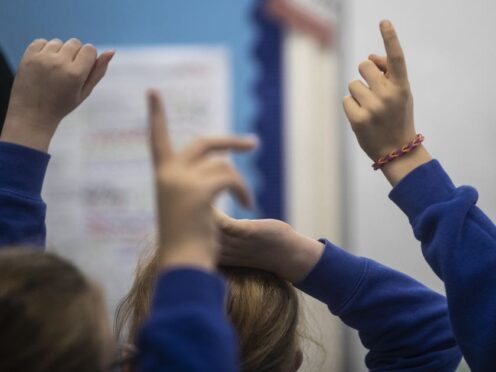
Girls’ results in reading and maths were more negatively impacted than boys during the Covid-19 pandemic, according to analysis.
The study by the Education Policy Institute (EPI) and education provider Renaissance analysed six million assessments taken by pupils from year three to nine in 2022/23.
They say the findings show the pandemic has had a bigger effect on girls than boys in reading, although girls still perform better.
According to the research, in primary reading, the gap in attainment narrowed by one month, meaning girls are 3.1 months ahead of boys.
In secondary reading, the gap between girls and boys has narrowed by 1.2 months to 4.4 months.
In primary maths, results have fallen for both boys and girls, but girls have fallen further meaning the gap has widened by two months to 2.9 months in favour of boys.

The figures in secondary maths show results have fallen for both boys and girls, but the difference has narrowed by 3.6 months to just 0.3 months in favour of girls.
The study also found “substantial gaps” between geographic regions, with Yorkshire and Humber being the lowest performing region, with pupils 4.3 months behind peers in London in primary reading. Pupils in London saw their results increase the most, up by the equivalent of 1.4 months in primary reading.
Jon Andrews, EPI head of analysis and director for school performance and systems, said: “What’s particularly striking in this latest analysis is that girls’ attainment appears to have been hit harder by the pandemic than it has for boys, with gaps in reading closing and boys pulling further ahead in primary maths.
“With significant regional variation in pupil outcomes persisting, and pupils in London pulling further ahead of those in other areas, the Government should evaluate the impact of the Opportunity Area programme and use this to inform policy development on place-based approaches to tackling social mobility, including the future direction of the Education Investment Area programme.”
The report also found the gap between special educational needs (SEN) and non-SEN pupils in primary reading had narrowed by one month to 19.4 months, and the gap between non-SEN pupils and SEN with Education Health and Care Plan (EHCP) pupils had narrowed by 0.2 months to 26.6 months.
In secondary reading, outcomes for non-SEN pupils and SEN with EHCP pupils were largely unchanged, but the gap between non-SEN pupils and SEN support pupils had narrowed by 5.0 months to 24.8 months.
Paul Whiteman, general secretary of the school leaders’ union the NAHT, said: “The pandemic undoubtedly disrupted children’s education – many missed months of in-person lessons and lost their routine.
“Schools worked incredibly hard to minimise the disruption, but there is no replacement for in-person learning.
“We also know that inequalities have also been made worse by the cost-of-living crisis, heaping pressure on schools and families.
“Teachers and leaders are continuing to pull out all the stops to support children to catch up, and whilst we are pleased to see that there has been a small closing of the gap for pupils with SEND, it is concerning to see the impact of the pandemic on girls’ attainment as well as those pupils with English as an additional language.
“Schools urgently need more support. We were bitterly disappointed that the Government did not announce more money for schools in the Budget and did not properly fund the Covid education recovery plan proposed by its own tsar, Sir Kevan Collins.
“The Government has also reduced subsidies for tuition, and financial pressures on schools are now so great many schools have had to withdraw this offer to children.
“Moving forward, we would like to see the Government increase investment in our schools, and in the community services like social care and mental health which are vital in helping pupils progress through their education.”
The analysis showed improvements in all ethnic groups for primary reading, while black primary pupils had closed the gap with white pupils and are now slightly ahead.
Improvements were also seen in secondary reading in mixed, Asian, black and other backgrounds, although results had fallen for Chinese and white pupils.
A Department for Education spokeswoman said school funding in 2024-25 will be £60.7 billion, making it the “highest ever level in real-terms per pupil”, with 90% of schools judged to be good or outstanding last year, up from 68% in 2010.
She said: “While girls continue to outperform boys across most headline measures, the latest data shows the gender gap between boys and girls has narrowed.
“We are taking a range of steps to improve attainment and outcomes for all pupils, with additional support for disadvantaged pupils through programmes, including the pupil premium which will rise to over £2.9 billion in 2024-25, and the National Tutoring Programme.”

Enjoy the convenience of having The Sunday Post delivered as a digital ePaper straight to your smartphone, tablet or computer.
Subscribe for only £5.49 a month and enjoy all the benefits of the printed paper as a digital replica.
Subscribe